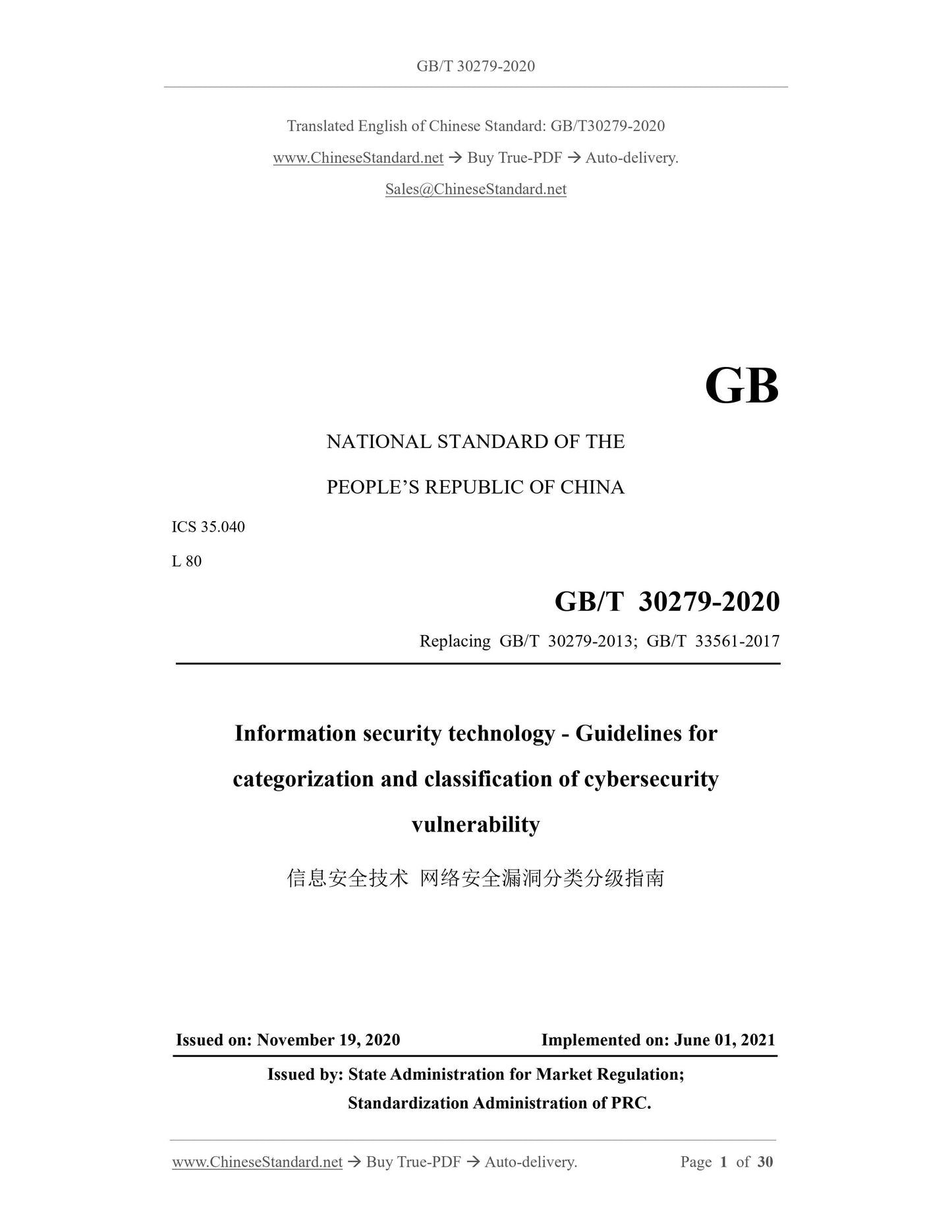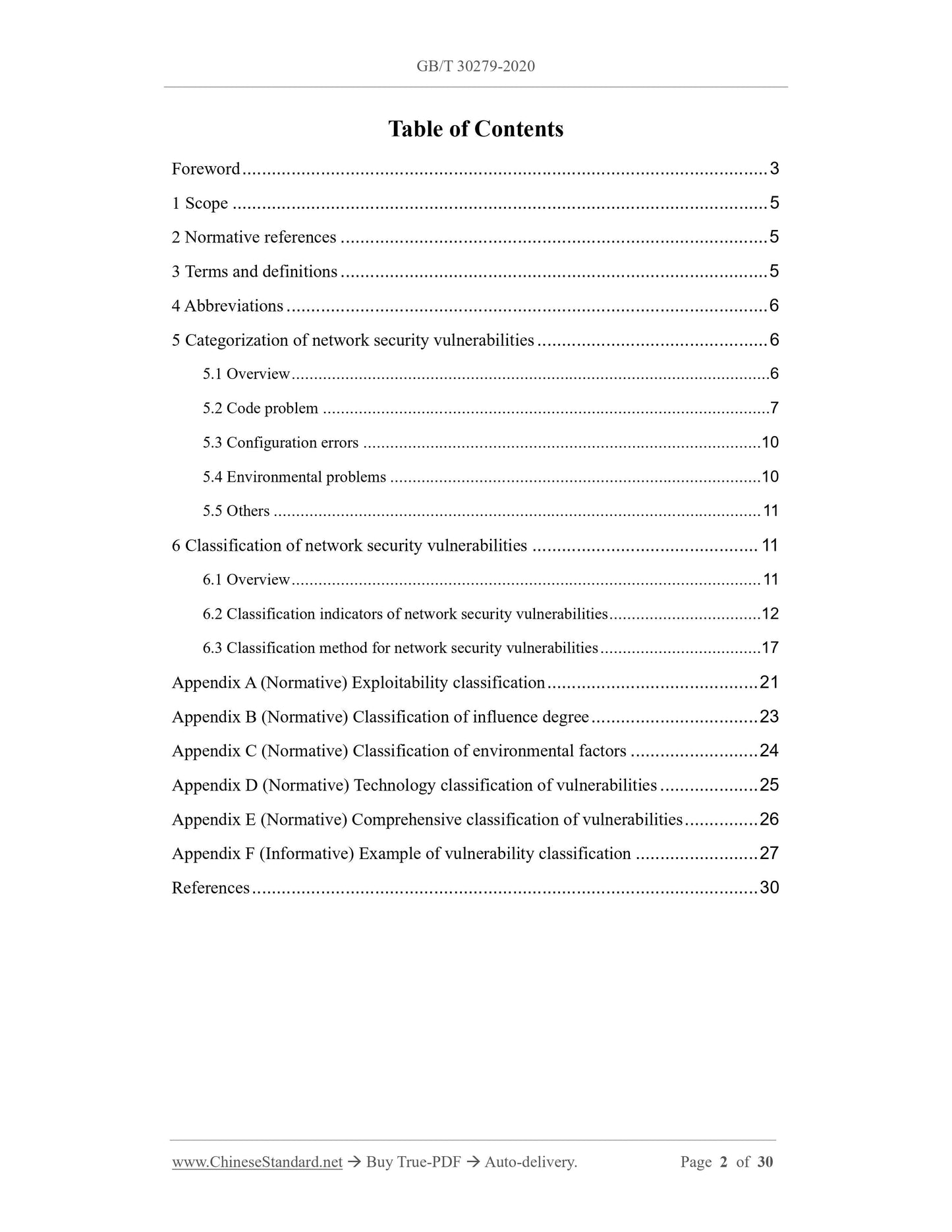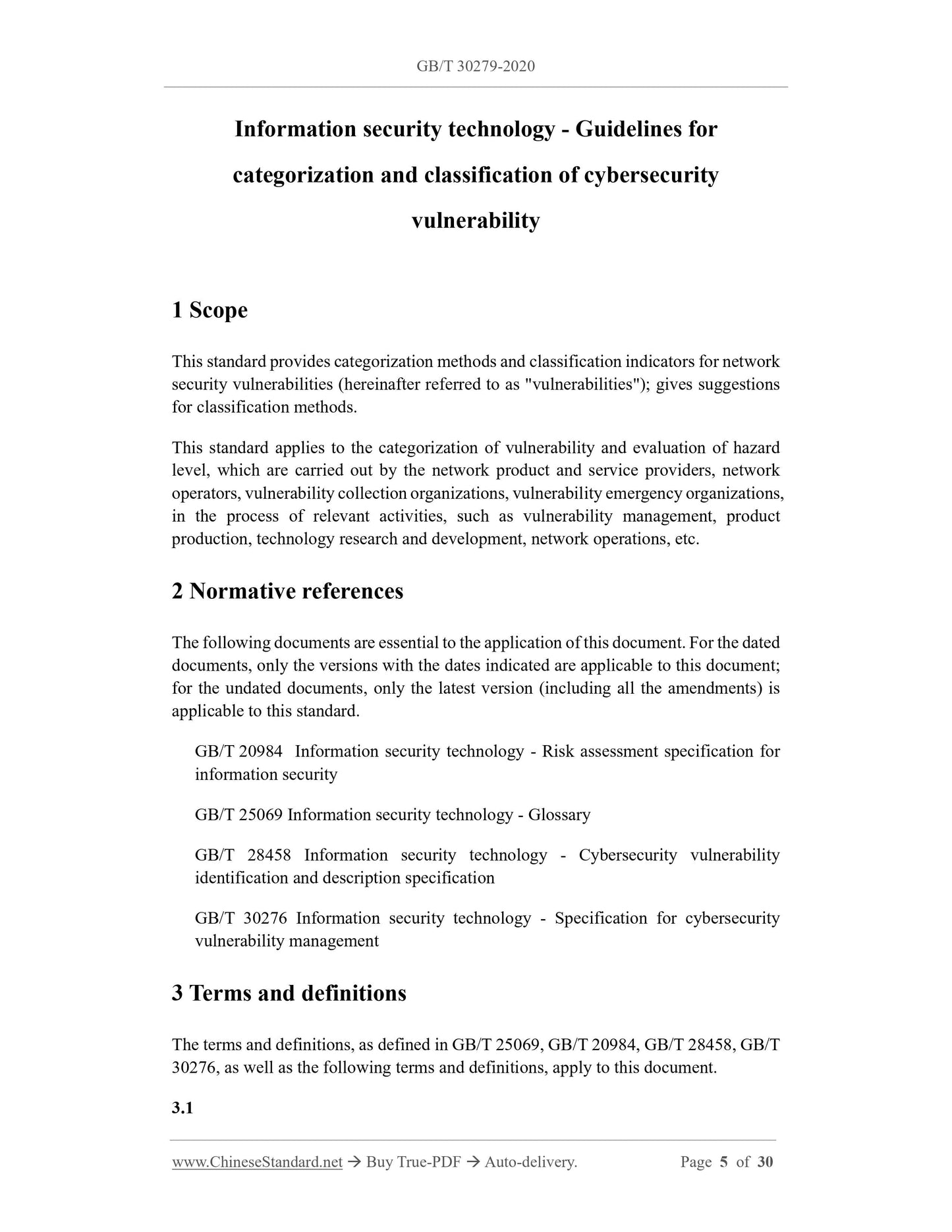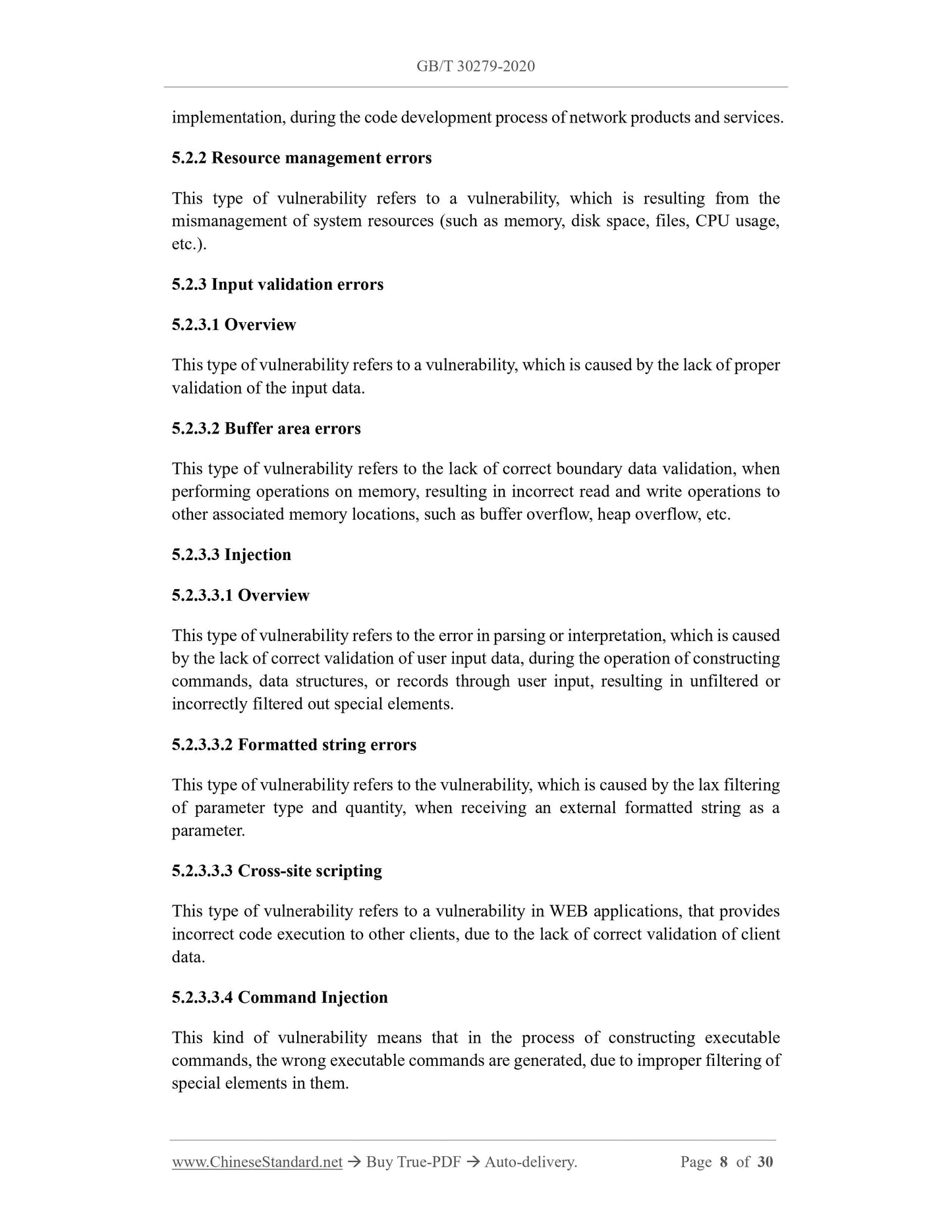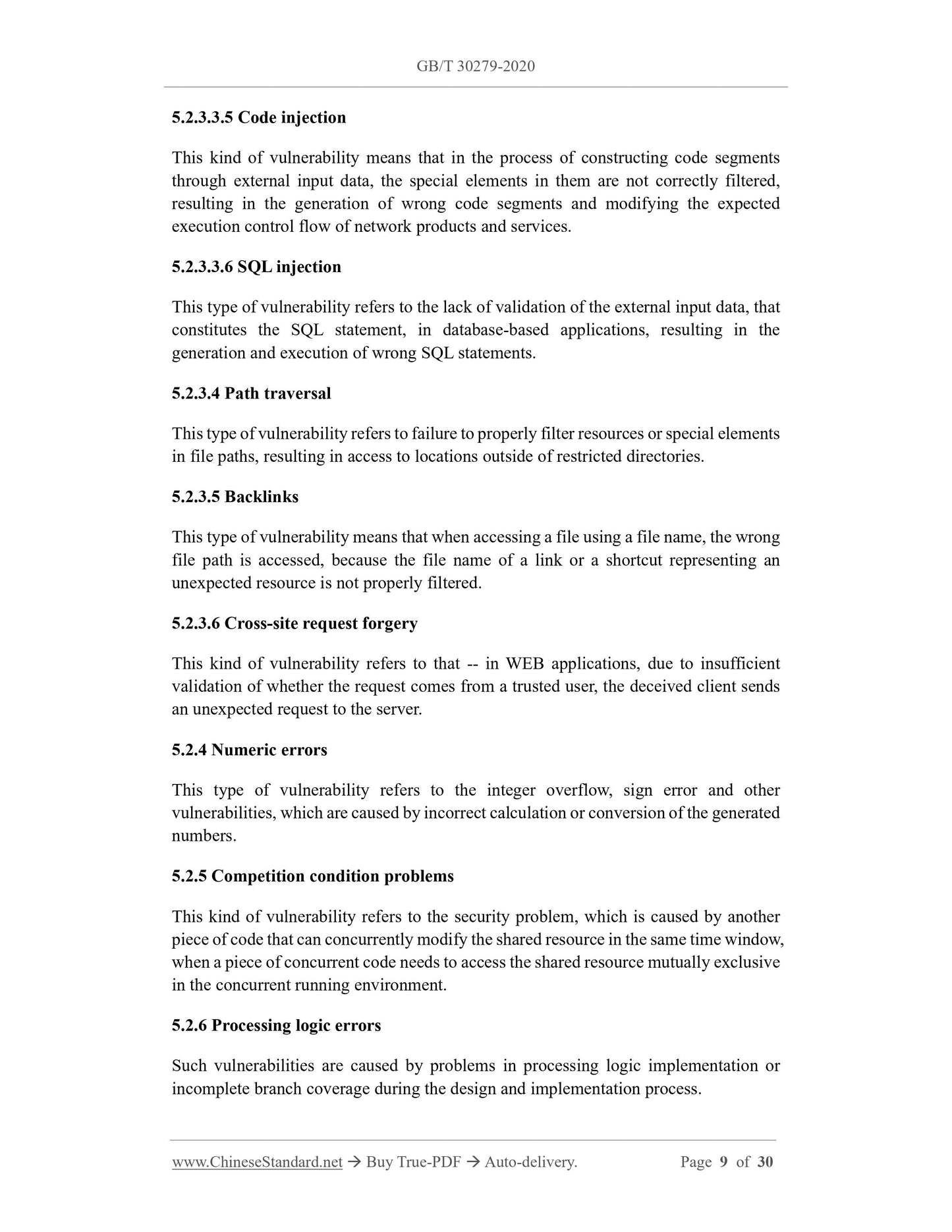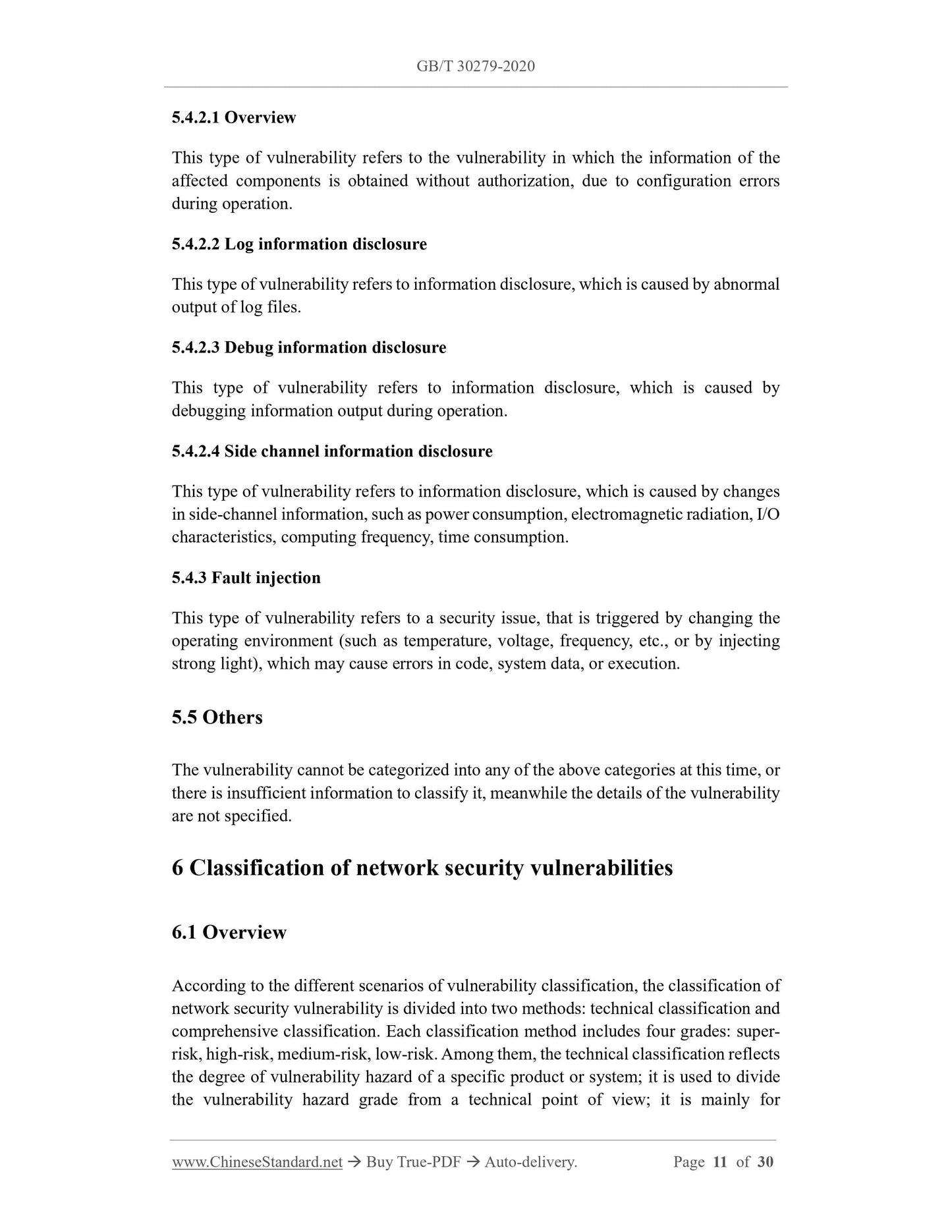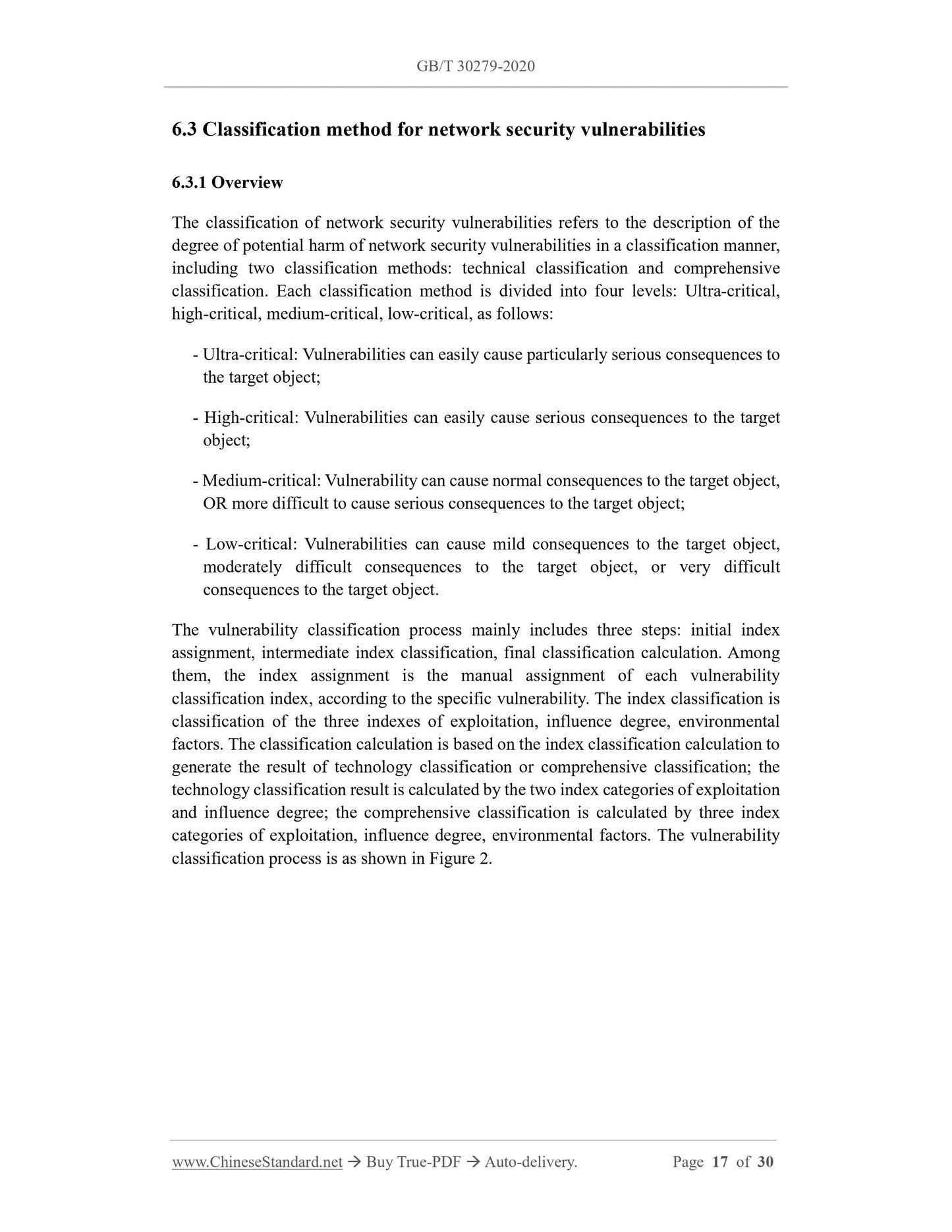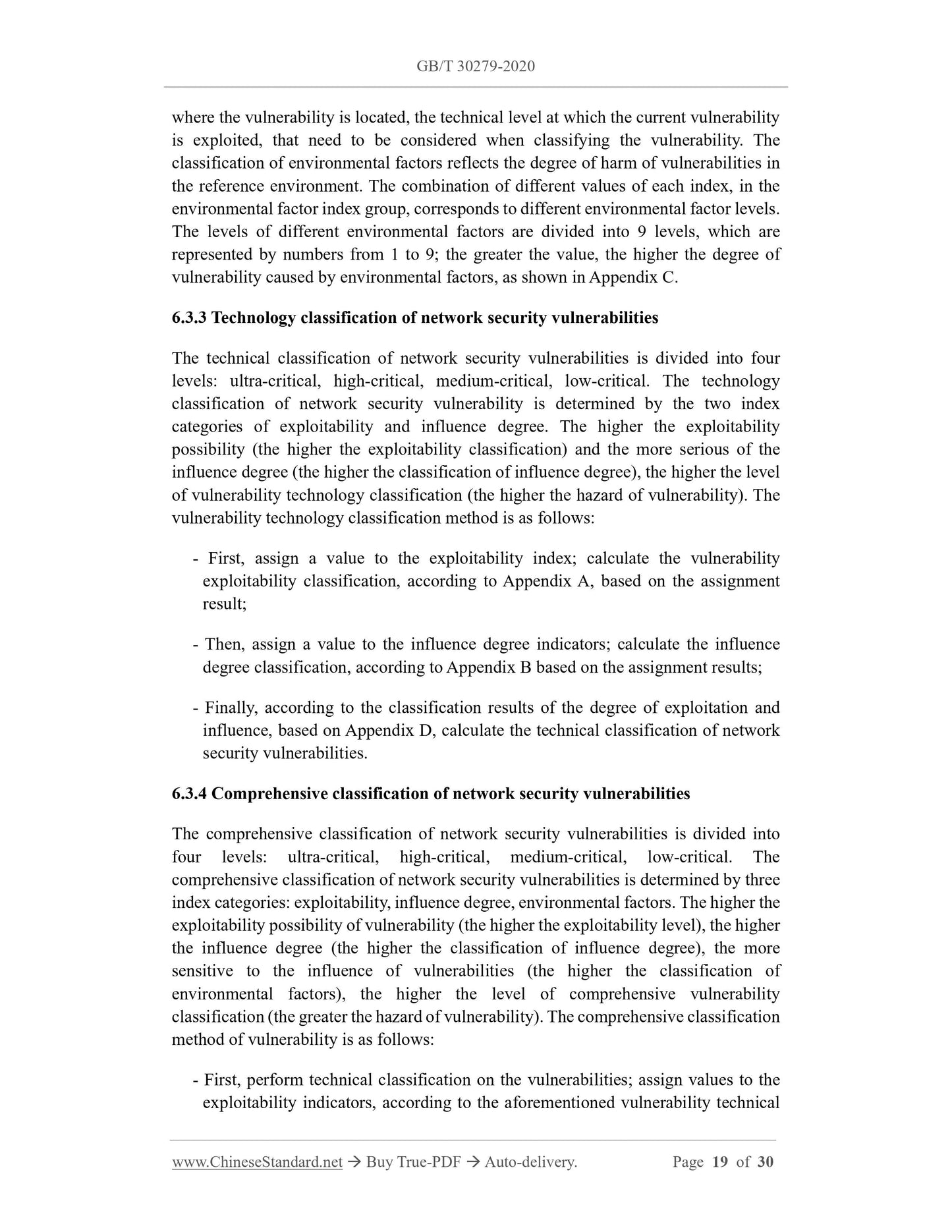1
/
of
8
www.ChineseStandard.us -- Field Test Asia Pte. Ltd.
GB/T 30279-2020 English PDF (GB/T30279-2020)
GB/T 30279-2020 English PDF (GB/T30279-2020)
Regular price
$350.00
Regular price
Sale price
$350.00
Unit price
/
per
Shipping calculated at checkout.
Couldn't load pickup availability
GB/T 30279-2020: Information security technology - Guidelines for categorization and classification of cybersecurity vulnerability
Delivery: 9 seconds. Download (and Email) true-PDF + Invoice.Get Quotation: Click GB/T 30279-2020 (Self-service in 1-minute)
Newer / historical versions: GB/T 30279-2020
Preview True-PDF
Scope
This standard provides categorization methods and classification indicators for networksecurity vulnerabilities (hereinafter referred to as "vulnerabilities"); gives suggestions
for classification methods.
This standard applies to the categorization of vulnerability and evaluation of hazard
level, which are carried out by the network product and service providers, network
operators, vulnerability collection organizations, vulnerability emergency organizations,
in the process of relevant activities, such as vulnerability management, product
production, technology research and development, network operations, etc.
Basic Data
| Standard ID | GB/T 30279-2020 (GB/T30279-2020) |
| Description (Translated English) | Information security technology - Guidelines for categorization and classification of cybersecurity vulnerability |
| Sector / Industry | National Standard (Recommended) |
| Classification of Chinese Standard | L80 |
| Classification of International Standard | 35.040 |
| Word Count Estimation | 22,238 |
| Date of Issue | 2020-11-19 |
| Date of Implementation | 2021-06-01 |
| Older Standard (superseded by this standard) | GB/T 33561-2017; GB/T 30279-2013 |
| Regulation (derived from) | National Standard Announcement No. 26 of 2020 |
| Issuing agency(ies) | State Administration for Market Regulation, China National Standardization Administration |
Share
